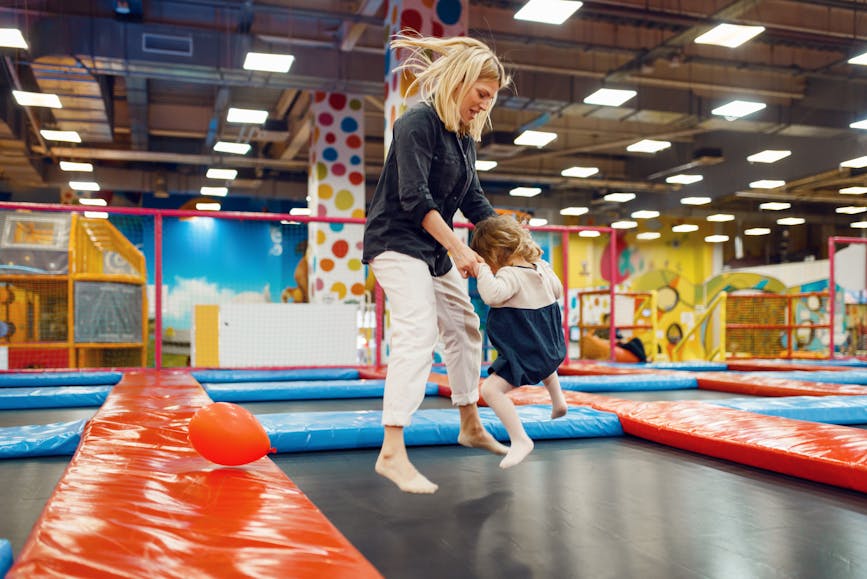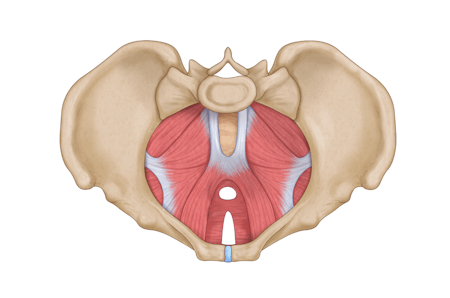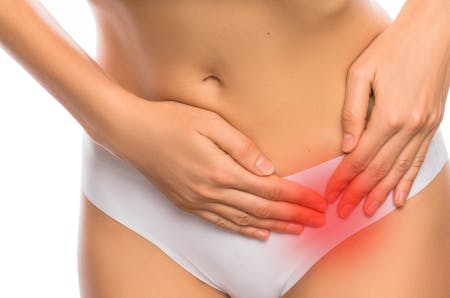IncontinencePostpartumUrinary Incontinence
What is urinary incontinence?
When women talk about peeing their pants when trying to make it to the bathroom or when exercising, this is urinary incontinence. Another term I’ve seen used frequently among moms is “peezing.”
The International Continence Society medically defines urinary incontinence as the complaint of ANY involuntary leakage of urine. Whether you soak through your clothes or you dribble a few drops in your underwear, it is all defined as incontinence.
There are 3 main types of urinary incontinence:
- Stress Urinary Incontinence (SUI) – 50% of individuals with urinary incontinence have SUI, which is the leaking of urine when coughing, sneezing, straining, having sex, laughing, jumping, exercising or any other type of exertion.
- Urge Incontinence (UI) – The leaking of urine associated with the sudden uncontrollable urge to empty the bladder that cannot be delayed, and leakage occurs. In other words, when you gotta go, you GOTTA GO! Urge incontinence is when you feel like you need to pee but you leak before you make it to the toilet.
- Mixed incontinence- A combination of stress and urge incontinence.
Take this Quiz!
1. After childbirth, it is normal to have occasional urinary leakage when jumping or sneezing.
FALSE
1 out of 3 women experience urinary incontinence. Although common, it is not normal!
2. Urinary incontinence is inevitable with aging and childbirth.
FALSE
If leaking pee is just a normal thing that comes along with aging or becoming a mom, then why do 52% of 22 year old elite athletes, who have never had kids before, also experience urinary incontinence during their daily life? (Thyssen, 2002)
Although age and childbirth may be risk factors for incontinence, it can also be experienced by women who have never given birth and also in a pediatric population (young to middle aged children.) Likewise, there are moms with 6 kids, and some 80 year olds who have never experienced urinary incontinence.
Furthermore, age is no barrier to the benefits of pelvic floor physiotherapy. In regards to incontinence, there is evidence to suggest that older people are just as likely to benefit from pelvic floor muscle exercises as younger people. So, whether you are 8, 22, 53, or 89 years old, you can still do something about urinary incontinence.
3. Surgery is the only way to fix and stop urinary incontinence.
FALSE
The 2010 Cochrane Collaboration concluded that physiotherapists with specialized training in pelvic floor rehabilitation (using internal vaginal examination to teach the exercises) should be the FIRST line of defence, before surgical consultation, for stress, urge and mixed incontinence in women.
That means that if you want to do something about urinary incontinence you should try pelvic floor physiotherapy:
BEFORE SURGERY…..
BEFORE MEDICATION…..
BEFORE PURCHASING A LIFETIME SUPPLY OF PADS…..
4. If you have tried kegels on your own at home or during an exercise class, and they did not help with your incontinence, it would still be beneficial to see a pelvic floor physiotherapist.
TRUE
Research shows that up to 50% of women trying to do kegels or pelvic floor muscle exercises that were self-taught (ex: from a pamphlet or video), perform the technique incorrectly. Practicing the wrong technique will not help the incontinence and could even make the problem worse.
Furthermore, kegels are not always an appropriate exercise for incontinence. In cases where the pelvic floor muscles are tight or over-recruited, kegels can make the urinary incontinence worse and sometimes create pain in the low back or abdomen.
A pelvic floor physiotherapist will help determine the cause of the urinary incontinence in order to find you an individualized solution.
5. Pelvic floor physiotherapy is only effective in helping incontinence in 20% of women.
FALSE
Pelvic floor physiotherapy can help stop urinary incontinence. Best of all, it is a conservative form of treatment. It comes with little to no risk or negative side effects. I regularly see women regain continence and bladder control in my practice. But don’t just take my word for it. There is an overwhelming amount of research supporting the use of pelvic floor muscle training to improve and cure urinary incontinence. So let’s take a look at the research.
-A 2011 Cochrane review found that women who had combined group AND individual supervision of pelvic floor muscle training from a health care professional reported a 90% improvement in stress urinary incontinence (SUI.)
-A 2014 Cochrane systematic review determined the following effects of pelvic floor muscle training (PFMT) for women with urinary incontinence compared to the control group receiving no treatment or a placebo drug. Women with urinary incontinence who were in the PFMT groups were:
- 8 X more likely than the controls to report that they were cured of stress urinary incontinence (SUI)
- 17 X more likely to report cure OR improvement of SUI
- 2 X more likely to report cure or improvement with SUI, UUI or mixed incontinence.
- 28 X more likely to report cure or improvement at the 6 month- 1 year follow up after completing treatment
In Summary
Women who receive pelvic floor physiotherapy report:
- Cure or improvement
- Better sexual outcomes
- Fewer leakage episodes per day AND smaller amounts of urine leakage
- Better quality of life
- Increased satisfaction with the treatment they received
- Less likely to seek further treatment
Maybe you’ve been told by your Doctor, friends, or family members that urinary incontinence is normal and there is nothing you can do about it. This is simply not true. I encourage you to book an appointment with a physiotherapist with specialized training in the pelvic floor, no referral is required.
©Lynn Sweeney, Physiotherapist
Bsc. Kin, MPT



